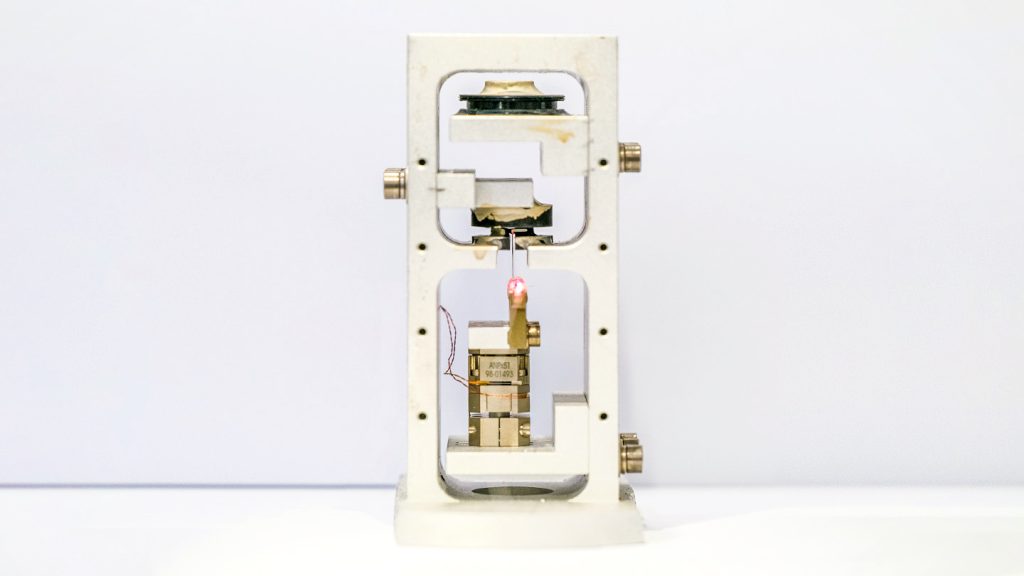Researchers in China have developed a tabletop device roughly the size of two smartphones stacked together to measure the Earth’s tides over several days. Known as a gravimeter, this device is designed to be lightweight and cost-effective, allowing it to detect tectonic plate movements, changes in underground water, hidden oil and gas reserves, and track magma within volcanoes for eruption predictions. Portable gravimeters have typically been bulky and expensive, but smaller prototypes, such as a postage stamp-sized gravimeter, have shown promise for basic geophysics applications.
The device created by physicist Pu Huang and his team in China uses two magnets, one levitated by the other, to measure gravitational changes. The levitated magnet moves up and down in response to shifts in the gravitational field, while a laser detects changes in its position. This allows researchers to monitor the Earth’s gravitational field as it fluctuates in response to tidal forces from the moon and detect seismic activity, such as earthquakes in Japan and Indonesia. While the sensitivity of this device is not as high as top-of-the-line portable gravimeters, the team intends to increase its sensitivity while shrinking it further in size.
Most existing high-sensitivity gravimeters are large, requiring bulky equipment to create vacuums or cool their parts to low temperatures, limiting their portability. The new device developed by Huang and his team aims to address this limitation by leveraging the force of magnetism between two magnets to measure gravitational changes. While the current device is small, with the central levitated magnet being smaller than a grain of rice, the researchers plan to integrate the entire system into a chip-sized device that can be used for fieldwork, such as placing it on drones for data collection.
The potential applications of miniaturized gravimeters are vast, ranging from monitoring tectonic activities to studying changes in groundwater levels and predicting volcanic eruptions. By reducing the size and cost of gravimeters, researchers hope to make these instruments more accessible for a wider range of scientific research and fieldwork. The ability to measure gravity with high sensitivity using compact devices opens up new possibilities for studying the Earth’s gravitational field and its variations over time, providing valuable data for geophysical research and applications.
While the current tabletop device developed by the Chinese researchers is not as sensitive as larger gravimeters, the team plans to enhance its sensitivity and further miniaturize the device in the coming years. By optimizing the design and reducing bulk from supporting equipment, they aim to create a chip-sized gravimeter that can be easily deployed for various fieldwork applications. The development of smaller, more affordable gravimeters has the potential to revolutionize geophysical research, enabling scientists to gather precise data on gravitational changes with greater convenience and efficiency than ever before.















